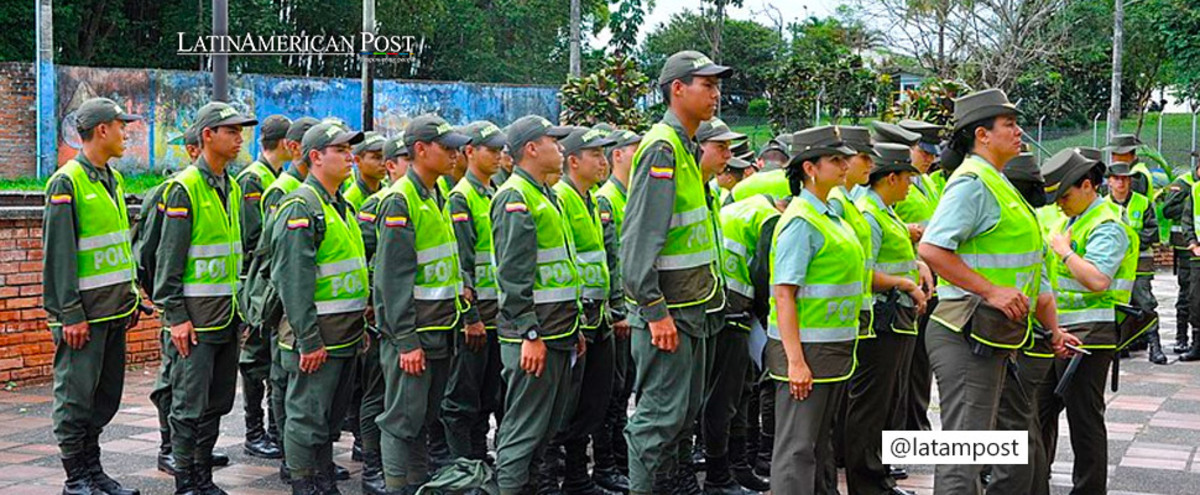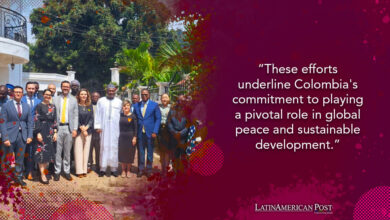Crime in Colombia is Combated Without Police
In the run-up to regional elections in Colombia, the lack of public forces to combat crime was highlighted.

Photo: Colombian National Police
LatinAmerican Post | Santiago Gómez Hernández
Listen to this article
Leer en español: La criminalidad en Colombia se combate sin policía
The sense of insecurity in Colombia has been worryingly increasing in recent years. The post-pandemic crisis seems to create the ideal situation for violence in the cities to grow uncontrollably. Additionally, the possibility of recording criminal acts establishes an atmosphere of unrest.
However, the problem is much more delicate since, for several years, there has been a crisis in the number of police required, and this has put several cities in competition to have a more significant number of public forces. This is why, amid the local and regional electoral campaigns, politicians are proposing ways to generate more police or solve these problems beyond increasing the number of uniformed officers.
According to the United Nations, there is a minimum standard of 300 police per 100,000 inhabitants. However, Colombia has 167,290, and Bogotá has 17,820, for a city of almost 9 million inhabitants. This means that in the country, there are about 290 inhabitants per police officer when the minimum should be 290. Additionally, in Bogota, 12,000 of the almost 18,000 police officers are administrative, so they do not provide patrol duties, according to information from Citynoticias. So, with the scarcity of public forces, the options must be alternatives.
Why is there a crisis in the number of police officers in Colombia? Police officers face many difficulties, so the number is insufficient.
Lack of Resources
Even though defense spending in Colombia is one of the highest in the entire region, the government admits that they still need more funding. The Minister of the Interior in Gustavo Petro's government, Alfonso Prada, said almost a year ago that "resources are not enough to protect the lives of so many people threatened in Colombia."
In addition, Colombia has severe challenges of threats by armed groups to civilians, social and political leaders. The assassination of social leaders in the South American country stands out negatively. As a consequence, this also generates a deficit in members of the security forces, unable to provide security to people in imminent danger.
According to the government, 1.3 trillion Colombian pesos were budgeted for 2021, but Prada estimates that twice as much is required. This is to have a police presence, not only in the cities but in the large territory, where violence against social leaders is higher.
Violence Against the Police
In Colombia, organized crime has a long history of attacking law enforcement. Since the time of Pablo Escobar, a criminal strategy known as Plan Pistola was implemented, in which the cartels paid hitmen to assassinate police officers. In 1990, the Medellín cartel paid one million pesos for each agent killed, 2 million pesos for non-commissioned officers, and 3 million pesos per officer, and ascended according to rank. Official figures estimate that between 1989 and 1992, the Medellín cartel killed 500 police officers.
This was a strategy used by the cartels since the 1990s and continues to be implemented by today's criminality. The assassination of police officers by cartels or armed guerrillas continues to be recurrent.
Threat Range
In Colombia, the police fight the typical criminality of the cities and combat drug cartels, guerrillas, and paramilitary groups. They all have a specific army-like structure and organization, with heavy weaponry.
This means that playing the role of police in Colombia involves combating everything from simple thefts and citizen fights to kidnappings by armed groups. They are even needed to attend sporting events and provide security for crowds, which generates a debate between professional soccer teams and municipal authorities. Many criticize that resources and public forces are provided to private events, but the groups claim that they cannot operate (neither economically nor legally) with only personal security.
This makes the training of personnel much more challenging and costly. It also makes them a military target for all these organizations that must fight with the army, navy, and air force.
Alternatives
Faced with these challenges, regional and national governments are trying to find different solutions. Whether using tools or other approaches in the fight against crime.
For example, today, amid the election campaign, several mayoral candidates have proposed increasing the number of surveillance cameras. In this way, there will be a better use of resources and greater surveillance.
On the other hand, the Petro government has also demonstrated its intention to bet on policies with a different approach to fighting crime. For example, a few weeks ago, the Colombian government announced a possible subsidy for young people currently involved in crime to encourage them to leave these activities and enter training or education.
Gustavo Bolivar, "petrista" candidate for mayor of Bogota, announced that he intends to focus on education. "A person who knows English does not stab another person," said the former senator for the Historic Pact. Although the phrase caused a stir, it shows that today the fight against insecurity in Colombia cannot be sustained with an increase in the force.




